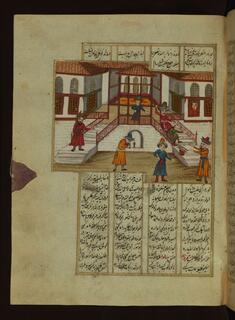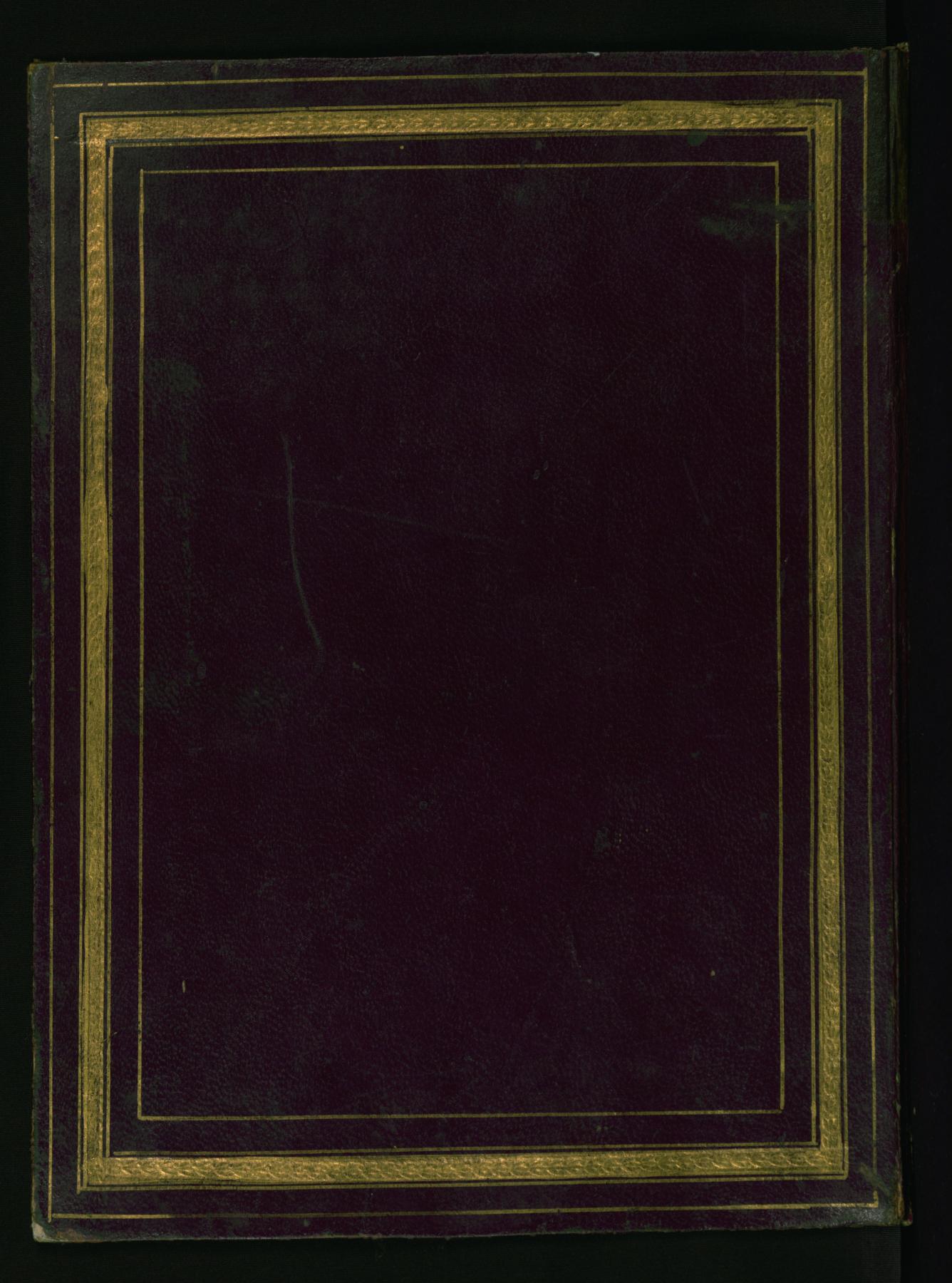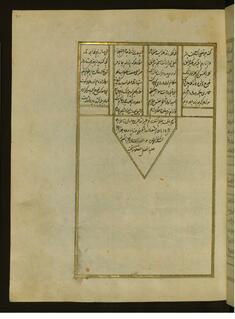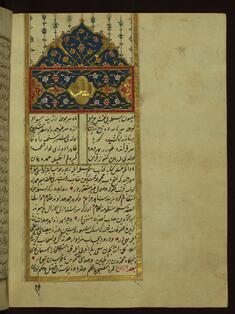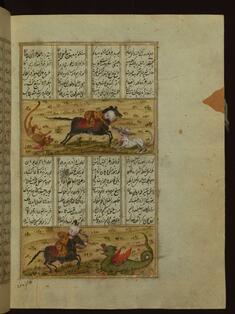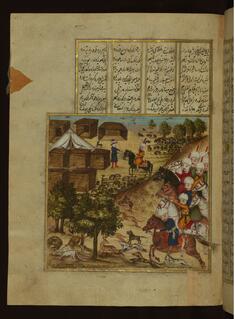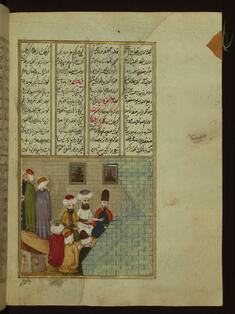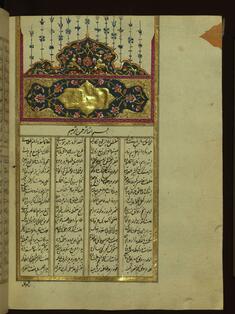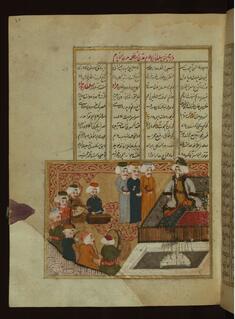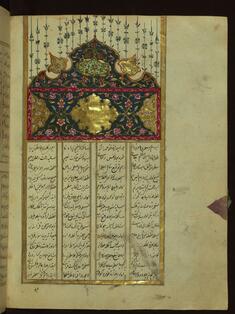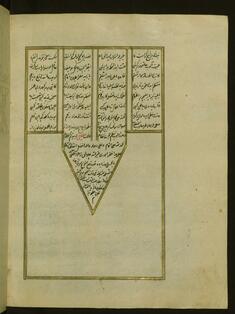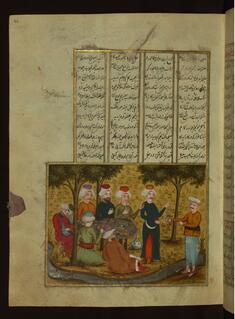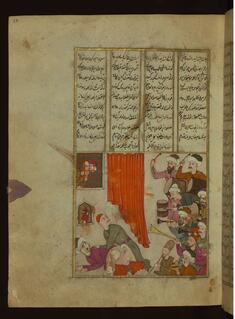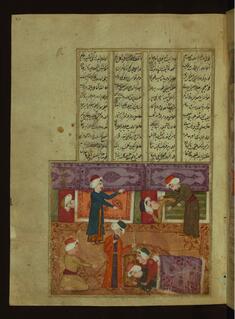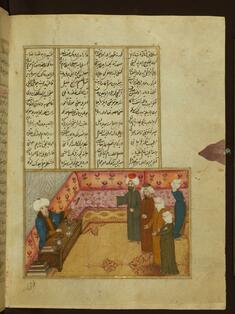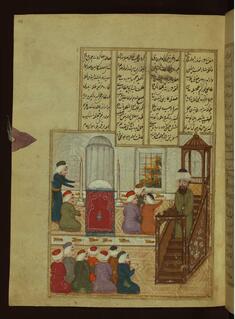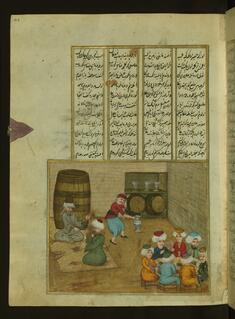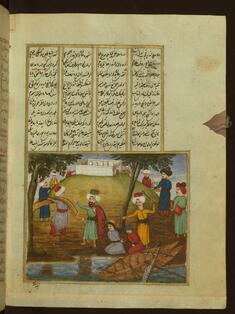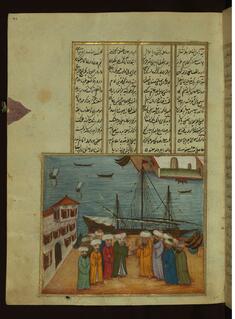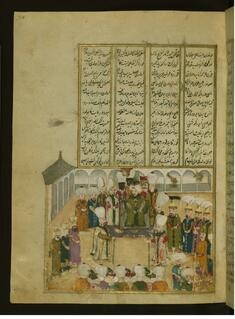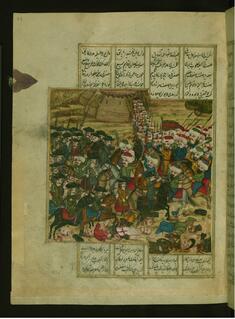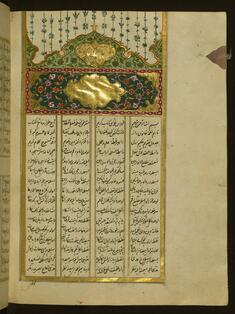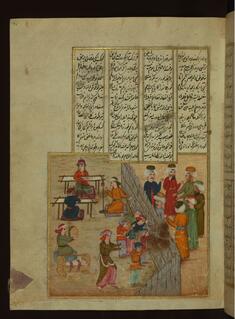Five Poems (Quintet)
(Manuscripts and Rare Books, Islamic World , Islamic Manuscripts)
Walters manuscript W.666 is an illuminated and illustrated copy of the Hamse (quintet) of the Ottoman Turkish poet and scholar 'Ata'ullah bin Yahyá 'Ata'i (died 1044 AH/AD 1634). Although different in content, this work takes its inspiration from the famous Persian Khamsah of Nizami Ganjavi (died 605 AH/AD 1209) and the Khamsah of Amir Khusraw Dihlavi (died 725 AH/AD 1325). This Ottoman copy of 'Ata'i's work ends with a portion of his Divan (fols. 142b-151b) instead of the 5th poem (mesnevi), Hilyet ül-efkar. The text, written in Nasta'liq script, was copied by Heyrullah Heyri Çavuszade in 1133 AH/AD 1721. There are 38 illustrations, and illuminated incipits introduce the different poems (fols. 1b, 22b, 63b, 107b, and 142b). The brown leather binding is original to the manuscript.
Provenance
Provenance (from the French provenir, 'to come from/forth') is the chronology of the ownership, custody, or location of a historical object. Learn more about provenance at the Walters.
Acquired by Henry Walters, Baltimore; by bequest to Walters Art Museum, 1931.
Exhibitions
| 2015-2016 | Pearls on a String: Artists, Patrons, and Poets at the Great Islamic Courts. The Walters Art Museum, Baltimore; Asian Art Museum, San Francisco. |
Geographies
Turkey (Place of Origin)
Measurements
Folio H: 8 1/4 × W: 6 3/16 in. (21 × 15.7 cm)
Credit Line
Acquired by Henry Walters
Location in Museum
Not on view
Accession Number
In libraries, galleries, museums, and archives, an accession number is a unique identifier assigned to each object in the collection.
In libraries, galleries, museums, and archives, an accession number is a unique identifier assigned to each object in the collection.
W.666
Do you have additional information?
Related Objects
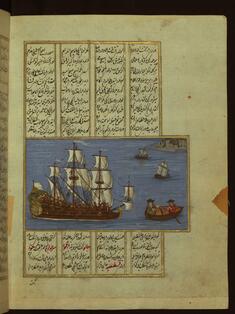
The Ship Carrying Tahir and Tayyib Being Greeted by Two Christian Nobles in a Boat
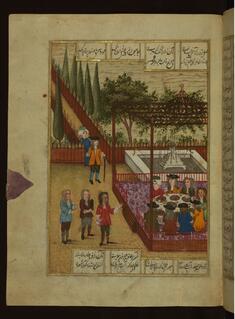
Tayyib and Tahir at a Party with Their Rescuers in European Attire

A King Looking at a Picture of His Son and His Tutor, who Fell in Love with Him
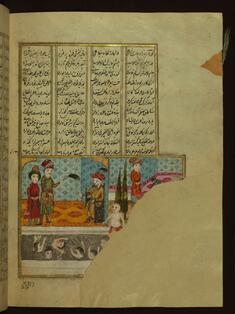
Hursid, a Chinese Ruler, Watching His Vizier’s Young Son Swim in a Pool
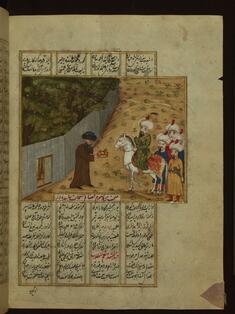
Caliph Ma'mun and His Soldiers Being Greeted by a Man with a Tray of Fruit
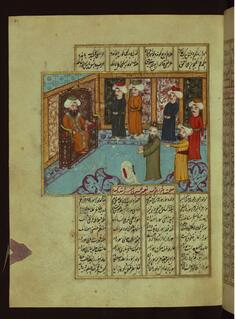
A Shamed Man Who Lied About a Three-day Journey from Mecca to Nishapur
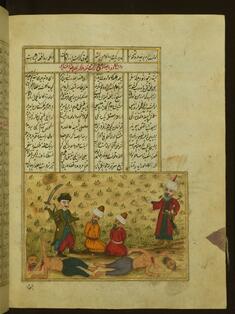
Two Lovers Spared from Being Beheaded Due their Loyalty for Each Other
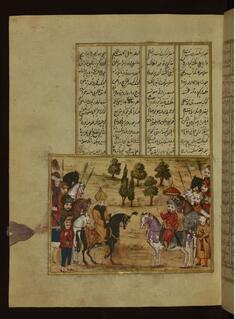
Meeting of the Armies of Alexander the Great and the Emperor of China

Plato in a Cave with His Followers Bringing their Self-portraits for Examination
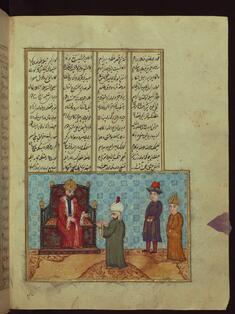
A Messenger from Seljuk Sultan Meliksah Being Received by the Byzantine King

Ottoman Turks Fighting the Polish Army, from the Hamse (Quintet) of ʿAtaʾullah bin Yahya ʿAtaʾi
